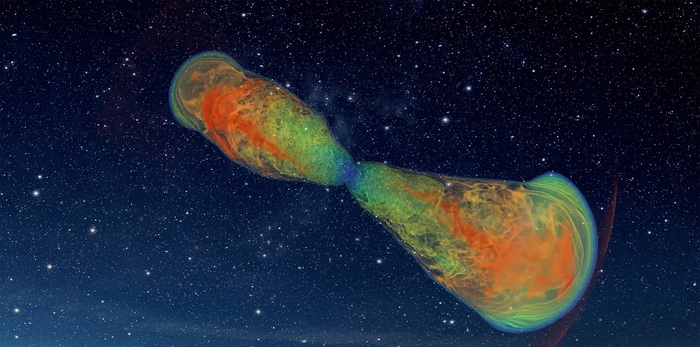Not only mergers of black holes and neutron stars: even the cocoon of debris surrounding massive dying stars can generate gravitational waves, that is, ripples of space-time. This is stated in a study by the American Northwestern University, presented at the 242nd meeting of the American Astronomical Society. For the first time, researchers used state-of-the-art simulations of these phenomena, also discovering that they can be detected by current instruments, such as the large US gravitational wave detector Ligo, brother of the European Virgo hosted in Italy.
When massive stars collapse into black holes, they can produce powerful jets of particles that travel almost at the speed of light. As these jets attempt to exit the dying star, they form 'cocoons' around them: very turbulent places where hot gas and debris mix randomly and expand in all directions: this is the phenomenon that, according to researchers led by Ore Gottlieb, perturbs space-time by creating gravitational waves.
If stellar cocoons are indeed sources of gravitational waves, then LIGO should be able to detect them during the new cycle of activity that has just begun. "Our study is a call to action for the scientific community to also consider cocoons of debris as a source of gravitational waves," says Gottlieb. "In addition, we know that cocoons emit electromagnetic radiation, so they could constitute so-called multi-messenger events (based on the observation and coordinated interpretation of different types of signals). By studying them – continues the researcher – we could learn more about what happens in the innermost part of the stars".

